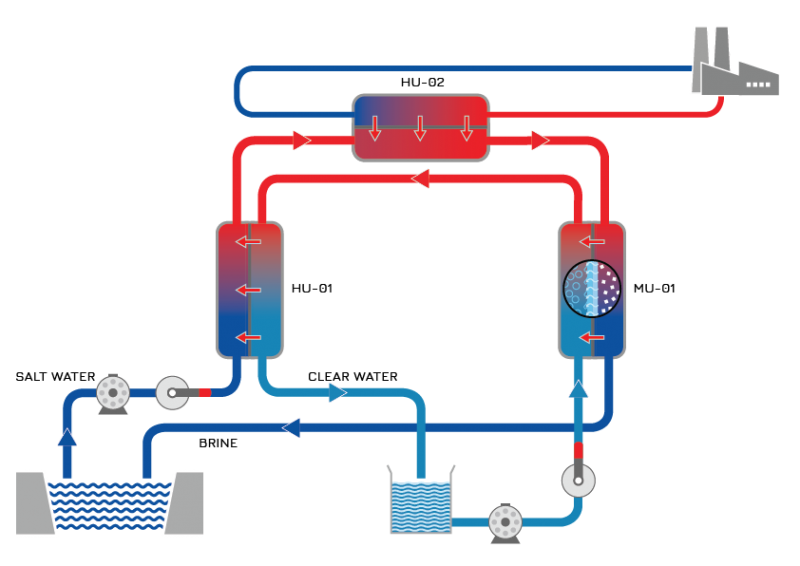Membrane Distillation: From Theoretical Principal to Practical Realities
Published on by Radjes Nidhansing, Owner at RN Solutions BV in Technology
RN Solutions is proud to announce that we are producing fresh water from seawater with our unique innovative products (membrane distillation).

Source: RN Solutions
Membrane distillation filtration
Cold water flows into the inlet of the rectangular unit passing the membrane distillation filter unit (MU). On the other inlet warm seawater enters the same unit. This creates a temperature difference across the membrane.
Due to laws of physics a balance will want to develop. Warm water wants to flow towards the colder water, but cannot pass the membrane. Only water vapor passes through the membrane and condensates on the cold side.
Heat exchanger
To continue this water production process, we create a constant temperature difference on both sides of the membrane by entering the distillate flow into our heat exchanger unit (HU).
Our heat exchanger unit consists of a foil in the middle. On one side of the foil we let cold seawater flow through the unit. On the other side the warm distillate passes through. Due to the temperature difference, the distillate releases its heat through the foil to the cold side of the unit increasing the temperature of the seawater.
Industrial waste heat
The distillate cools down and is reused in the membrane distillation unit. The warmed up seawater needs to be heated a little bit more to create the temperature difference in the filter unit. For instance, (industrial) waste heat (< 90° C) can be used for reheating the seawater to the required temperature.
Brine or concentrate
When this process takes place continuously, you will get a seasalt concentrate (brine) on the warm seawater side of the unit. This can be easily removed from the system and applied for other purposes.
High optimal energetic system
The ultimate goal of our high optimal energetic system is to produce water which can be used for making drinking water. To create this water, only a temperature difference is required of about 3° C. The higher the temperature difference, the higher the flux will be.
Watch the video - https://www.youtube.com/watch?v=vb3aRdVVnws
Media
Taxonomy
- Treatment
- Filtration
- Technology
- Filtration
- Desalination
- Sea Water Desalinisation